Author: Teng Yan, Chain of Thought; Translation: Golden Finance xiaozou
Earlier this month, SpaceX's Starship 4 rocket was successfully launched. It is the most powerful rocket ever built.
This engineering marvel is equipped with a super heavy booster equipped with 33 "Raptor" engines, providing a total takeoff thrust of 72 MN. To put this into perspective, this is twice the thrust of the Apollo program rockets and three times the thrust of NASA's space shuttles.
I have always been fascinated by the development of deep tech companies. Behind the seemingly overnight success are years of unremitting efforts and millions of dollars in research and development funding.
But those in the industry know that for a deep tech company to succeed, many low-probability events must come together perfectly. SpaceX, founded 22 years ago as a startup with big dreams, is a great example of how success can only come from hard work and incremental progress.
Such a huge success is rare in the crypto space.
Only a handful of crypto companies from the ICO boom (2017-2018) are still around. Our crypto industry is young and nascent, with only a short time to get noticed, and that mentality often seeps into founders’ plans for their companies.
That’s why it’s so exciting to see an OG project leap to a new level and become one of the most exciting launches of the year.
1, Arweave, and AO Computer are closely connected
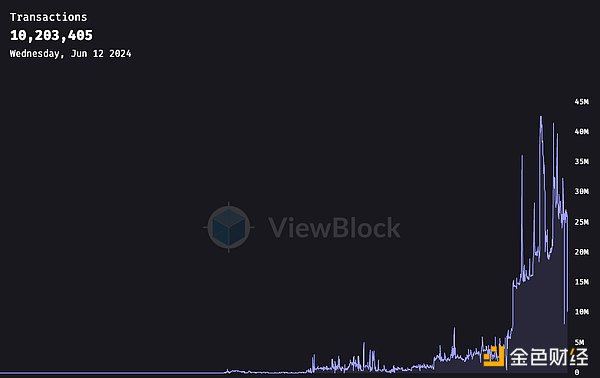
Arweave was launched in 2018 as a decentralized data permanent storage solution. Despite its fundamental importance, data storage has struggled to find attractive use cases and large-scale adoption.
Data storage is not something sexy. It is a commodity.
AO computer is Arweave's most ambitious project.
AR is the storage layer.
AO stands for the computation layer.
AO aims to be a secure, scalable, trustless, customizable computation platform - a hyper-parallel computer.
The main idea is deterministic virtual machine + permanent data storage = reproducible state. This was conceived four years ago and has now been implemented into AO's participant-oriented computation environment.
I want to emphasize that AO computer is very different from most other blockchains today. It exists because of the foundational work done by Sam (founder) and the Arweave team over the years. Just like deep tech startups need a solid foundation to succeed, AO would not have been possible without Arweave's secure decentralized storage network.
I'm very happy to see their success.
2, Not Another Ethereum or Solana
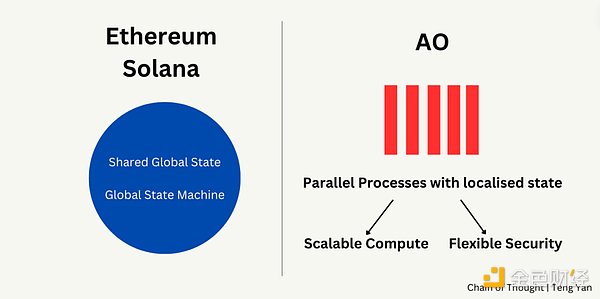
Ethereum and Solana are globally synchronized state machines with globally shared state.
AO computer is a globally shared messaging machine with local state.
Global shared state is the default mode of current blockchains. It enables consensus and trust between participants and maintains the integrity of the ledger. However, this is not enough to support future artificial intelligence applications.
The AO computer framework distinguishes it from Ethereum and Solana through two main features: scalable computing power and a flexible security model.
· Scalable Computing
In Ethereum and Solana, adding more computing resources (new nodes) does not enhance the network’s output. Regardless of how many validator nodes there are, Ethereum still processes 12-15 transactions per second.
However, the AO computer framework provides a dynamic way to scale. As more computing resources are integrated into the network, the computing output scales accordingly. This is because AO processes run locally in parallel and are not constrained by global state.
· Security
Ethereum adopts a unified security model, where every transaction is equally protected in its Proof of Stake (PoS) network. While this ensures consistency, it can be inefficient and costly for low-value transactions, such as games.
The AO computer framework introduces a flexible security model that allows developers to tailor security requirements to the specific needs of the process.
3, Supercomputer
Imagine that you have a huge supercomputer that is made up of many small computers distributed around the world.
This large networked computer can do many things at the same time, such as running games and applications. The small computers communicate with each other using a messaging system. The best part is that each small computer will not be slowed down by the rest of the network, while still enjoying the security and trust of the blockchain.
This is the simple concept of AO computer.
The AO computer framework breaks down the typical blockchain node architecture into smaller modular components. These components include: · Process · Message passing unit · Scheduling unit · Computing unit Each component plays a key role in the overall function of the system. From a high-level perspective, AO can be summarized into the following three core concepts: - Multiple processes can be run in parallel. - Processes maintain sovereignty. - Asynchronous messaging supports coordination and communication between processes. · Parallel processing At the heart of the AO framework are processes, i.e., applications on the platform. These processes run independently and in parallel. A single process has no memory and cannot see the local state of other processes. This isolation allows complex computations to be performed on powerful machines, expanding the design space far beyond the limitations of traditional smart contract protocols (fees, gas limits, block size). Computational units play a key role here. They provide the necessary computing power to keep AO processes running efficiently. · Application sovereignty A notable feature of AO is that it grants sovereignty to developers.
Each process runs autonomously, allowing developers to choose their computing tasks, virtual machines, and security parameters without interference from other processes.
Developers can adjust security measures based on the value and sensitivity of a specific transaction or calculation.
· Asynchronous messaging
This is the glue that connects the network together. Communication in the AO protocol is managed through asynchronous messaging.
Processes exchange messages to coordinate operations and receive necessary data. All applications follow common messaging standards to ensure consistency and interoperability.
The messaging unit forwards these messages and works with the scheduling unit (similar to a rollup sequencer), which sorts the messages and records them on Arweave.
4, AO's trillion-dollar opportunity lies in the field of AI
· Computational requirements, data storage, and bandwidth: The LLaMA-3 model requires a lot of computing resources (RAM, GPU power). Ethereum is not optimized for the large-scale data storage and high bandwidth required for LLM inference.
· Latency and performance: Ethereum's transaction speed hinders the low-latency, high-throughput environment required for effective use of AI models. No user wants to wait 12 seconds (Ethereum's block time) to get the results.
· Cost: On-chain AI inference is very expensive.
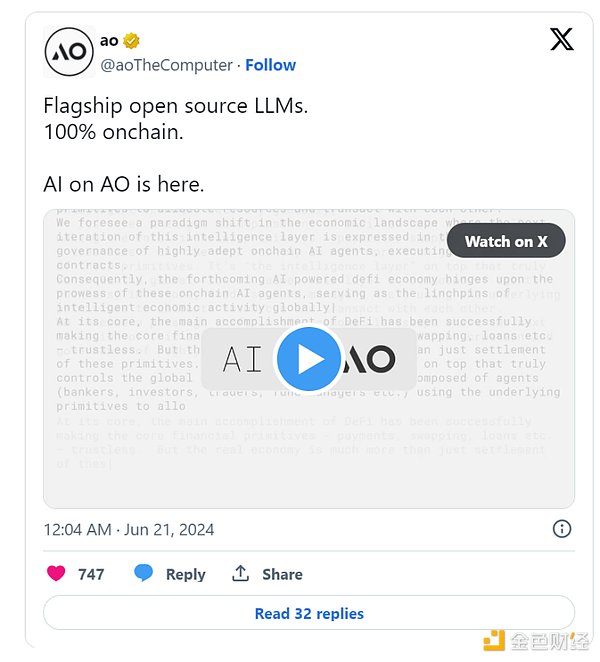
So I was very excited when AO announced last week that the Large Language Model (LLM) can run on smart contracts, bringing intelligence directly to the blockchain. This will enable the integration of human-like decision making in a trustless network.
· Memory
Running AI models requires loading model parameters into memory. The more parameters, the higher the memory requirements.
Running a relatively small model like Llama-3-8B requires at least 12GB of memory. GPT-4 has over 1.76 trillion parameters, and GPT-5 is expected to have 50 trillion parameters. AI models are only going to get bigger.
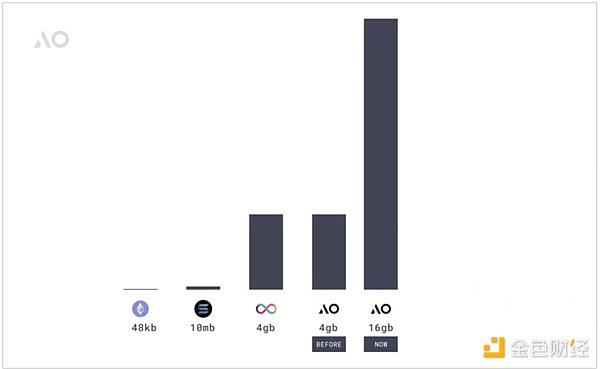
Today's blockchain is very limited in terms of memory. From the protocol level:
· Ethereum has 48KB of memory for executing smart contracts
· Solana has 10MB of memory
· Even the Internet Computer (ICP), which is entering the field of artificial intelligence, has only about 3B of memory, and its artificial intelligence application capabilities are limited.
AO uses WebAssembly in its execution environment and now supports WASM64, which can support high-performance applications. Currently, AO has a memory limit of 16GB and a protocol-level cap of 18EB. This enables it to run heavy computations, such as Llama-3 or Phi 3 (non-quantized) reasoning.
· Data Storage
WeaveDrive is a new feature that enables AO applications to access all data on Arweave as if it were a local hard drive.
By acting as a local file system in smart contracts, WeaveDrive improves the efficiency and accessibility of data storage and retrieval. More dApps will be incentivized to upload and store data on Arweave.
The AO computer framework enables direct on-chain execution of large AI models by leveraging the full computational power of a single machine.
By combining an unbounded execution environment with efficient and accessible data storage, AO significantly expands the design space of on-chain applications, especially those that are compute-intensive and AI-driven. This facilitates the development of autonomous agents with similar smart contract guarantees.
The integration of Cron jobs (a feature not natively available on most blockchains) and autonomous agents will significantly boost on-chain activity and facilitate more complex dynamic interactions.
As we get closer to an era where AI is ubiquitous, many people underestimate the importance of this breakthrough.
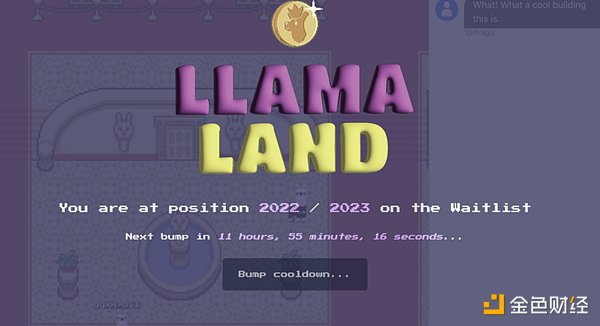
Llamaland is an MMO AI game based on AO computer.
In Llamaland, users can submit petitions to Llama King, an AI agent that reviews their petitions using a large language model (LLM) and decides how many meme coins to allocate to each user. It is worth noting that the entire process is performed entirely on-chain, making it the first implementation of LLM that runs entirely on-chain.
Although it is not yet live, you can keep an eye on its development.
5、Build Permaweb
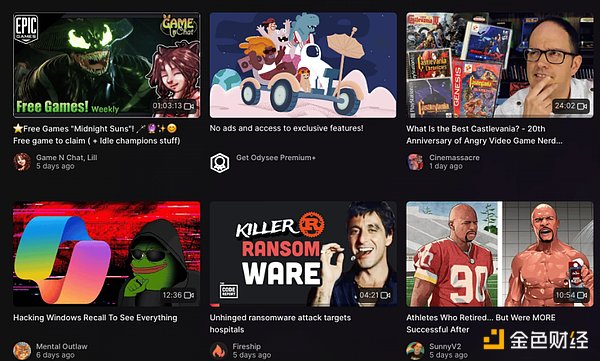
On June 6, Arweave released 3 important announcements:
· Forward Research acquires Odysee
· Autonomous Finance launches AgentFi
· AO provides $35 million in financing for builders of the AO ecosystem
In my opinion, the most eye-catching move is the acquisition of Odysee. Most people underestimate Odysee.
Odysee is the biggest Web3 social app that no one has heard of.
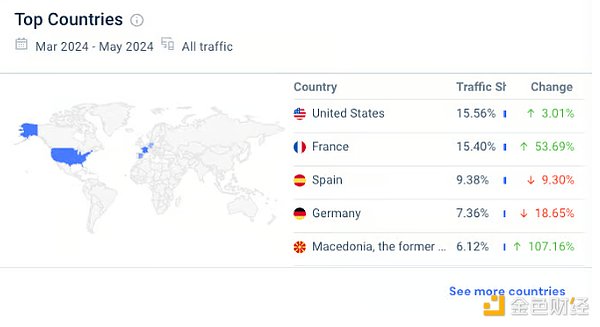
Odysee has over 7 million monthly active users (20 times that of Farcaster) and 2.2 million website visits per month. Odysee is a more open version of YouTube that uses blockchain technology to give creators greater control and freedom. Unlike YouTube, which relies on traditional advertising revenue sharing, Odysee rewards creators with LBRY Credits (LBC).
Odysee is a dark corner of the Internet where free speech is valued and content is less filtered. Its "Wild West" is particularly noteworthy because it provides more unfiltered controversial content.
According to SimilarWeb, a large portion of its users are from Europe, especially France, Spain and Germany. Although it cannot match YouTube in scale, Odysee still attracts a large number of users who may be potential users of AO applications.
Odysee will now build on the Arweave infrastructure to add its platform to the permaweb, giving creators 100% control over their content.

AO is currently running on its test network, using the Proof of Authority (PoA) security mechanism. Most applications on the mainnet will adopt the Proof of Stake (PoS) mechanism. The mainnet launch date has not yet been determined.
In the past three months, its testnet has had about 7,000 active users per day, 3,000 to 4,000 processes, and 182 million messages sent. While these numbers are not staggering, they are enough to show that this is a small but active community.
· Dexi
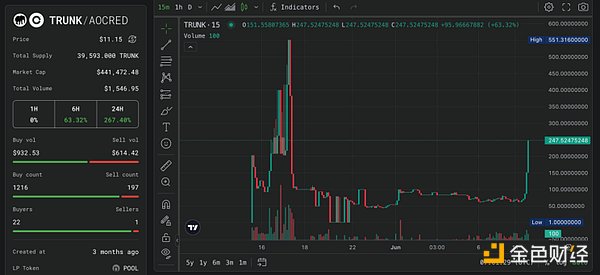
Dexi automatically collects and organizes data on asset prices, exchanges, liquidity, etc. Think of Dexi as a blockchain-based Bloomberg. It is managed by a network of autonomous agents, hosted on Arweave, and can connect to all available liquidity pools.
Dexi is permissionless and extracts data directly from the Dexi aggregate agent. This setup ensures censorship resistance and all information can be verified on-chain.
· 0rbit
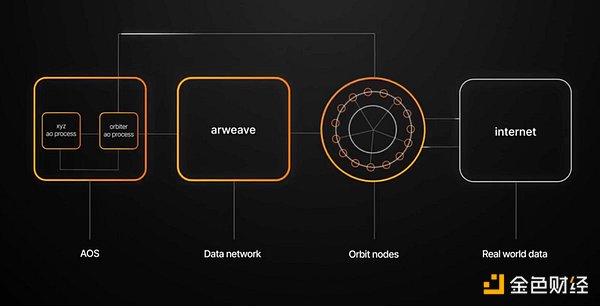
0rbit is a decentralized oracle network with two main components: an AO module and a network of nodes that can fetch data from anywhere on the internet. This is critical infrastructure for building useful applications on AO.
The AO module interacts with the 0rbit node to send data requests and receive results. Anyone can run a node and contribute to the network. Fetching data asynchronously from the internet means that the process does not have to wait for a response.
Currently, 0rbit can fetch new information from user-defined website APIs and price information streams from Coingecko's API.
I found some other interesting things on AO, including AMM (Bark, Permaswap, ArSwap), Trunk (AO meme coin) and Astro (overcollateralized stablecoin using AR as collateral). AO is still in its early stages, and many projects have not been production tested or have not yet shown a large number of transactions.
6, AO Token Economics
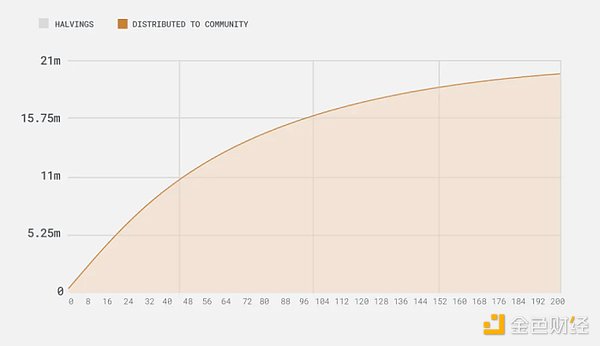
AO tokens were launched on June 14, and minting is retroactive to February 27, 2024. Its issuance method is fair, without investor or team allocation, which I like.
The minting schedule shows a distribution pattern similar to Bitcoin, with no pre-mining and a total of 21 million coins. The amount of new minting is reduced by half every 4 years, but it is a smooth process, unlike the sudden halving event.
The new AO tokens will be distributed as follows:
· Arweave token holders (36%)
· Bridgers of staked assets such as stETH, SOL, etc. (64%)
So far, about 1 million tokens have been minted, most of which have been distributed retroactively to AR token holders. AR token holders will continue to earn AO tokens at every 5-minute interval. AOCRED tokens from the testnet can be converted to AO at a ratio of 1000:1.
Important: AO tokens are not transferable or tradeable until 15% of the total supply has been minted (approximately February 8, 2025). This allows time for the fledgling ecosystem to develop and the mainnet to launch, and AO tokens will be used to secure the network.
· Minting AO by holding AR>

I did some calculations on the expected return per AR token. The calculations here assume 1 AR = $30.
· Holders who hold 1 AR token will receive approximately 0.016 AO tokens over the next 12 months.
· Over a 12 month period, there are approximately 4.2 million AO in circulation.
AR holding APY is modest, ranging from 2.5% to 50% depending on expected FDV, which in turn depends on market conditions when the token becomes tradable over the next year. Assuming good market sentiment in 2025, a FDV of $10 billion might be quite reasonable, which would imply a 25% APY. · Minting AO by bridging assets such as stETH. Holding 0.01% of the bridged total locked value (TVL) for 12 months will earn you about 210 AO tokens. As of June 25, about $320 million of bridged stETH was used to mint AO, with an APY of up to 33% - 600% depending on TVL and FDV. APY estimates are volatile and heavily influenced by the total value of the bridged assets (TVL) and the expected token FDV.
This is a very attractive low-risk yield opportunity for those who hold stETH today.
APY will decrease as more users become aware of this and bridge their stETH. The idea of bridging stETH minting is a win-win for both the AO team and users.
Bridging stETH can generate significant income (about $30 million per year on $1 billion in deposits) which will fund ecosystem projects and other development activities.

It is critical to monitor the TVL of the bridged asset as it may form a balance with the AR token price. If the TVL remains relatively low, more people may sell AR to miners using the staked asset, and vice versa.
The total supply of the parent token AR is 66 million, and there are 65 million tokens in circulation. AR has potential anti-inflation properties because AR used for data storage goes into the endowment fund, and the endowment fund will only release AR tokens when mining becomes unprofitable.
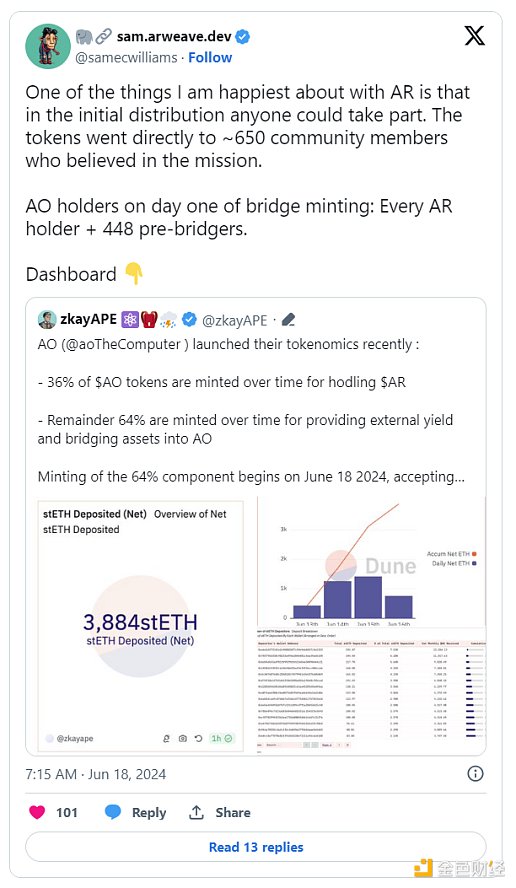
7 My view on AO
When considering whether a protocol will succeed, I like to break it down into smaller pieces.
I asked myself this question: What is the most important thing for AO to achieve the same success as Solana?
· High demand for AI agents and crypto applications: Given the rapid development of AI in the past two years, this seems to be the current trajectory. Other blockchains are developing off-chain computation using technologies such as zkML/OpML, but only AO can currently support full AI computation directly on-chain.
· Composability with major blockchains: AO must be tightly integrated with other major blockchains. It is unrealistic to expect existing developers and applications to fully migrate to AO. Therefore, building bridges and communication pipes with existing ecosystems is critical.
· Developing a social layer: Ultimately, the success of a blockchain will not be about transaction speed or low fees. Cultivating a passionate developer community and attracting users is key to gaining widespread adoption. Monitoring developer activity and social media sentiment can serve as a measure to some extent.
I will keep a close eye on these three aspects and adjust my views on AO accordingly.
8、Other ideas
· AO computer performs decentralized computing in a completely different way from traditional blockchains. It may succeed or fail. But the ability to perform large-scale computations on the chain is an important unlocking in the AI era.
· AO uses a participant-oriented approach. These platforms are used for systems that require high concurrency, modularity, and scalability. Although the participant model has theoretical advantages, it remains to be proven whether it can gain widespread adoption and large-scale success. Challenges include handling unexpected failures and maintaining consistency among distributed participants.
· AO is in its very early stages. I found on the test network that most users are trying text-based chats and games. Tools still need to be built, which takes time. It is not easy to port applications directly from other chains due to the different architectures and languages used. Overall, AO feels like early Solana in 2021 when it had only a handful of applications and a lot of skepticism.
· Long-term conviction required: AO requires a high degree of conviction. Short-term traders may have a hard time finding an immediate catalyst as the token will not be tradable until 2025.
· Demand for Arweave: AO will create sustained demand for AR, both as a growth catalyst and as a new platform for application development. Every process on AO will write data on Arweave and drive AR's utility.
AI and crypto are undoubtedly the two most important technology paradigm shifts of this decade. The intersection of AI and crypto will be disruptive. In the future, we may look back and wonder why we didn't pay more attention to this aspect.
My gut tells me that AO will be the vanguard force leading the way.
 JinseFinance
JinseFinance
 JinseFinance
JinseFinance JinseFinance
JinseFinance JinseFinance
JinseFinance JinseFinance
JinseFinance JinseFinance
JinseFinance JinseFinance
JinseFinance JinseFinance
JinseFinance JinseFinance
JinseFinance JinseFinance
JinseFinance JinseFinance
JinseFinance